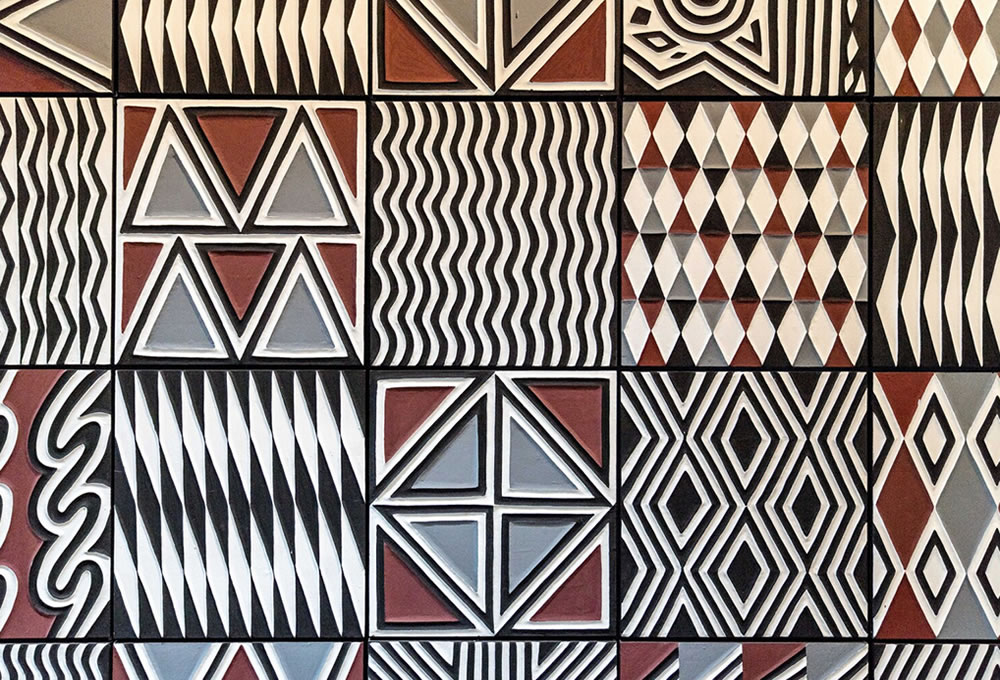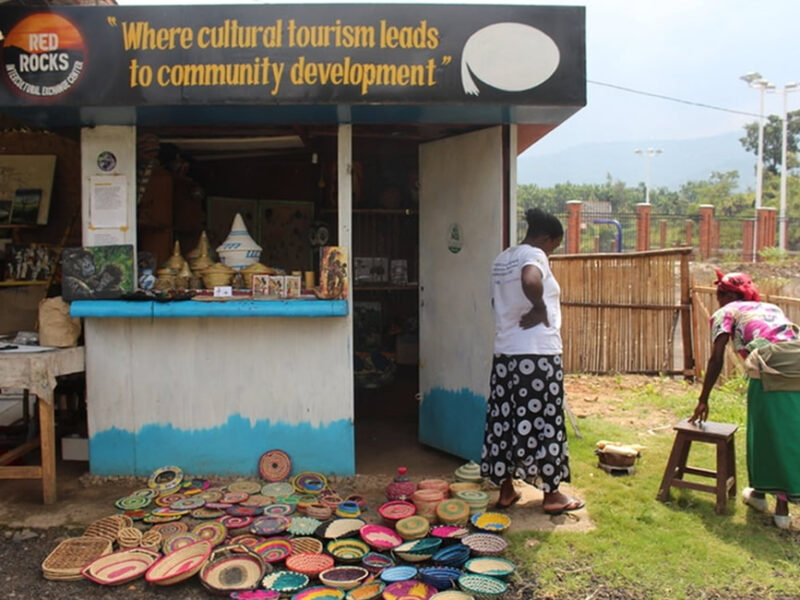
Art is Now the Biggest Trend in Rwanda Tourism
There’s no thin line between art and tourism, since both are inextricably linked. When a tourist visits a place, he wants to carry a piece of souvenir to remind him about the place he visited.
And artists are the producers of such pieces. In the end, they profit since the tourist dollar is always naturally appealing for their sustenance.
This is a kind of trade that’s quite vibrant in Musanze, the hub of Rwanda’s tourism industry.
Art pieces are ubiquitous everywhere you go, especially around Kinigi where tourists visit to not only see the famous mountain gorillas but also other attraction this place offers. Art pieces can be found hanging on the walls of hotels and among other places the tourists are likely to visit.
According to an article appearing in Tourism&More, an online journal, “artistic tourism attracts people who are willing to spend money.
Numerous studies from around the world have shown that people who include the arts in their travel plans often have higher income levels than other tourists to that locale, have a greater likelihood of staying in local hotel, take longer trips and shop more.”
There are several art galleries that have opened their doors where tourists can go and purchase these pieces. Art centers and galleries found in Musanze include (located along the road to Kinigi), and Red Rocks Art Gallery, located in Kinigi.
Apart from these, there are individual artists and craftsmen that sell their products in Musanze, such as COPABU Cooperative and Kinigi Community Commercial Center (KCCC) Cooperative.
Willy Karekezi, a visual artist in Kigali, says he paints in Kigali, but transports some of his pieces to Musanze where they are displayed in different galleries there.
“Some tourists come to visit Rwanda for a day or two and they head straight to Musanze for gorilla trekking. These tourists are unable to visit the art galleries in Kigali, and that’s why I take some of my pieces to Kinigi where tourists can easily find and purchase them,” he says.
Some of Karekezi’s latest paintings can be found at Red Rocks Art Gallery in Kinigi where he says he has forged a partnership with the gallery to market and sell his artwork.
“Tourism is quite vibrant here in Kinigi and we discovered that through art, the artists can not only produce aesthetic pieces that appeal to the eyes of the tourists but also art pieces with bold messages behind them about conservation.
Through this, both the tourists and the locals become conscious about environmental protection through the eyes of an artist,” says Greg Bakunzi, founder of the Red Rocks Art Gallery.
Hotels surrounding the main tourist attractions in Musanze are cashing in on this trend, playing host to several art pieces and exhibitions from artists as far as Kigali. At the Red Rocks Cultural Center in Nyakinama village, you find pieces of artwork placed strategically at the reception, and more often than not when a tourist wants to depart, he or she is likely to buy these art pieces that are conveniently priced in dollars.
Mohamed Ndabaye, a resident artist at Red Rocks Cultural Center, says over the last few years, tourism in Musanze has tremendously grown, and this has been a boon to them since they are able to produce and sell more pieces.
“Rwandan artists mostly rely on tourists since only a few locals purchase our products. It’s therefore prudent to strategically place our products where tourists can easily reach them. It’s good that more galleries are opening their doors here in Musanze, and artists are now able to find places they can display and market their products,” says Bakunzi.
Another trade that’s taking advantage of tourism boom in Musnze is the crafts trade. COPABU is composed of a group of about 1,000 members, mostly rural women and several cooperatives and they have recently opened a shop in Musanze with women making traditional baskets and men making sculptures.
The main raw materials at the base of their products are the banana bark, grass marsh, papyrus and jacaranda wood. It is a large handicraft shop selling local products, including woodcarvings, jewellery, basketware and other souvenir-worthy items, with flexible opening hours.
Another handcraft shop, composed of 12 cooperative members, can be found at the Kinigi Community Commercial Center, near the Volcanoes National Park.


